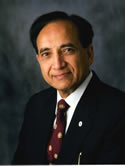| Abstract: |
Importance This study reports the impact of laser surgery on quality of life in patients with oral cavity lesions. Objective To compare postoperative pain and quality of life in patients treated with flexible fiberoptic CO2 laser vs electrocautery in patients with oral cavity precancerous lesions and early stage cancers. Design Randomized controlled trial. Setting Single center. Participants Patients with premalignant oral cavity lesions and early stage oral cancer. Intervention Patients were randomized to have surgical resection using either flexible fiber carbon dioxide laser (Laser) or electrocautery (EC). The patients were then followed over a period of 28 days to assess for outcomes including pain, quality of life, performance status, return to work, and return to diet. Quality of life was measured by the University of Washington Quality of Life (UWQOL) questionnaire and the performance status score (PSS). Main outcome measure The primary endpoint for this study was the numerical pain rating on postoperative day (POD) 7. Results Sixty-two patients were randomized (32 laser and 30 electrocautery). Lesions excised were carcinoma in 30(48%), dysplasia in 31(50%) and benign in 1(2%). There was no difference in the location of lesion, size of lesion, defect size, type of closure, resection time, and blood loss between Laser and EC arms. Patients who had Laser had less pain compared to EC (mean pain score on POD 7 L = 2.84 vs EC = 3.83, P = 0.11). better UW QOL scores and PSS scores, quicker return to normal diet (median days L = 26.0 vs EC = 28.5, P = 0.17) and faster return to work (median days L = 13.0 vs EC = 16.5, P = 0.14). However, these results were not statistically significant. Conclusion There was a trend for patients treated with laser to have less pain and better quality of life scores but these result were not statistically significant. Based on the actual observed difference, a large multicenter RCT with 90 patients in each arm is required to determine the clinical relevance of our results. |













